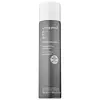What's inside
What's inside
 Key Ingredients
Key Ingredients

No key ingredients
 Benefits
Benefits

 Concerns
Concerns

 Ingredients Side-by-side
Ingredients Side-by-side

Water
Skin ConditioningAloe Barbadensis Leaf Juice
Skin ConditioningPropanediol
SolventBetaine
HumectantCaprylyl Glycol
EmollientDicaprylyl Ether
EmollientDecyl Glucoside
CleansingPolyglyceryl-4 Caprate
EmulsifyingXylitylglucoside
HumectantGlycerin
HumectantHydrolyzed Corn Starch
HumectantAnhydroxylitol
HumectantBeta Vulgaris Root Extract
Skin ConditioningGlyceryl Oleate
EmollientDipropylene Glycol
HumectantXylitol
HumectantPotassium Sorbate
PreservativeCocos Nucifera Water
MaskingGlyceryl Caprylate
EmollientCitric Acid
BufferingAvena Sativa Kernel Extract
AbrasiveLactic Acid
BufferingGlucose
HumectantVaccinium Myrtillus Fruit Extract
Skin ConditioningSodium Benzoate
MaskingSorbic Acid
PreservativeTapioca Starch
Parfum
MaskingWater, Aloe Barbadensis Leaf Juice, Propanediol, Betaine, Caprylyl Glycol, Dicaprylyl Ether, Decyl Glucoside, Polyglyceryl-4 Caprate, Xylitylglucoside, Glycerin, Hydrolyzed Corn Starch, Anhydroxylitol, Beta Vulgaris Root Extract, Glyceryl Oleate, Dipropylene Glycol, Xylitol, Potassium Sorbate, Cocos Nucifera Water, Glyceryl Caprylate, Citric Acid, Avena Sativa Kernel Extract, Lactic Acid, Glucose, Vaccinium Myrtillus Fruit Extract, Sodium Benzoate, Sorbic Acid, Tapioca Starch, Parfum
Alcohol Denat.
AntimicrobialHydrofluorocarbon 152a
Water
Skin ConditioningIsododecane
EmollientC13-15 Alkane
SolventDicaprylyl Ether
EmollientSunflower Seed Oil Glycerides
EmollientPolyquaternium-16
Dioleoylethyl Hydroxyethylmonium Methosulfate
Propylene Glycol Dibenzoate
Skin ConditioningIsohexadecane
EmollientTriheptanoin
Skin ConditioningPPG-5-Ceteth-20
EmulsifyingC13-16 Isoalkane
SolventPEG-40 Hydrogenated Castor Oil
EmulsifyingParfum
MaskingAminomethyl Propanol
BufferingLinalool
PerfumingCoumarin
PerfumingCitronellol
PerfumingGeraniol
PerfumingCitral
PerfumingLimonene
PerfumingAlcohol Denat., Hydrofluorocarbon 152a, Water, Isododecane, C13-15 Alkane, Dicaprylyl Ether, Sunflower Seed Oil Glycerides, Polyquaternium-16, Dioleoylethyl Hydroxyethylmonium Methosulfate, Propylene Glycol Dibenzoate, Isohexadecane, Triheptanoin, PPG-5-Ceteth-20, C13-16 Isoalkane, PEG-40 Hydrogenated Castor Oil, Parfum, Aminomethyl Propanol, Linalool, Coumarin, Citronellol, Geraniol, Citral, Limonene
Ingredients Explained
These ingredients are found in both products.
Ingredients higher up in an ingredient list are typically present in a larger amount.
Dicaprylyl Ether is created from caprylic acid. It is a texture-enhancer and emollient.
As an emollient, Dicaprylyl Ether is non-comedogenic. It helps soften and smooth the skin by creating a barrier on top. This barrier helps trap moisture in, helping to hydrate the skin.
Dicaprylyl Ether gives a non-greasy feel and better spreadability to products.
Learn more about Dicaprylyl EtherParfum is a catch-all term for an ingredient or more that is used to give a scent to products.
Also called "fragrance", this ingredient can be a blend of hundreds of chemicals or plant oils. This means every product with "fragrance" or "parfum" in the ingredients list is a different mixture.
For instance, Habanolide is a proprietary trade name for a specific aroma chemical. When used as a fragrance ingredient in cosmetics, most aroma chemicals fall under the broad labeling category of “FRAGRANCE” or “PARFUM” according to EU and US regulations.
The term 'parfum' or 'fragrance' is not regulated in many countries. In many cases, it is up to the brand to define this term.
For instance, many brands choose to label themselves as "fragrance-free" because they are not using synthetic fragrances. However, their products may still contain ingredients such as essential oils that are considered a fragrance by INCI standards.
One example is Calendula flower extract. Calendula is an essential oil that still imparts a scent or 'fragrance'.
Depending on the blend, the ingredients in the mixture can cause allergies and sensitivities on the skin. Some ingredients that are known EU allergens include linalool and citronellol.
Parfum can also be used to mask or cover an unpleasant scent.
The bottom line is: not all fragrances/parfum/ingredients are created equally. If you are worried about fragrances, we recommend taking a closer look at an ingredient. And of course, we always recommend speaking with a professional.
Learn more about ParfumWater. It's the most common cosmetic ingredient of all. You'll usually see it at the top of ingredient lists, meaning that it makes up the largest part of the product.
So why is it so popular? Water most often acts as a solvent - this means that it helps dissolve other ingredients into the formulation.
You'll also recognize water as that liquid we all need to stay alive. If you see this, drink a glass of water. Stay hydrated!
Learn more about Water